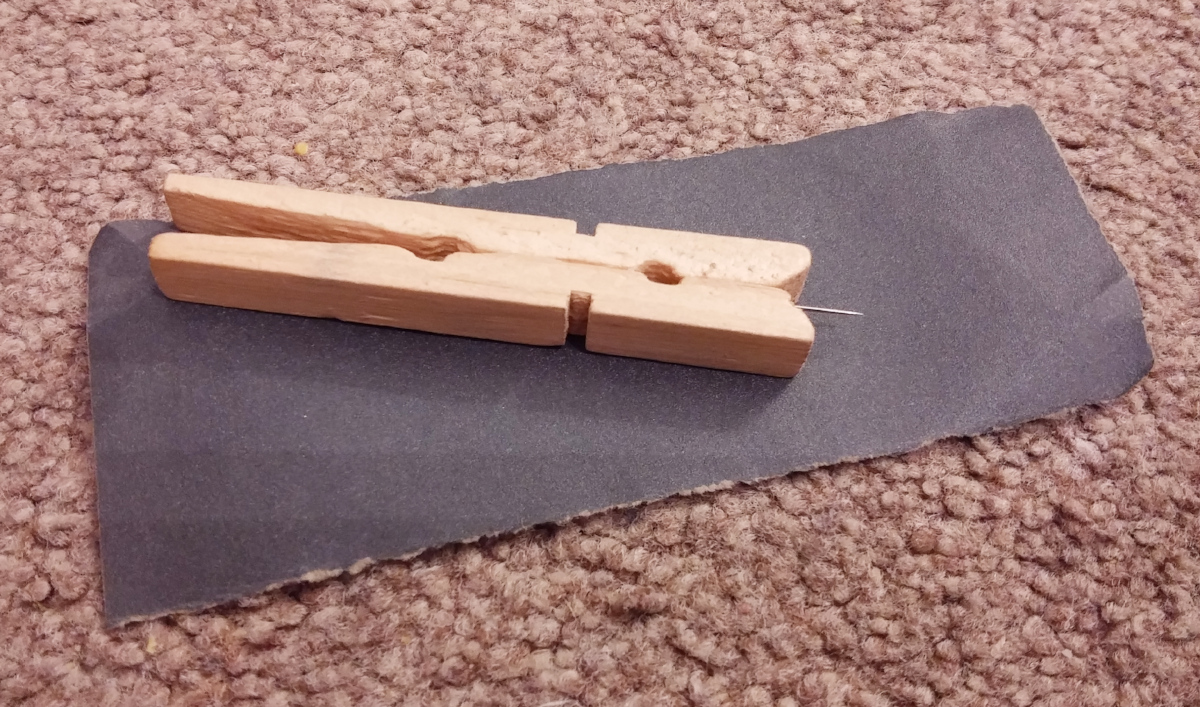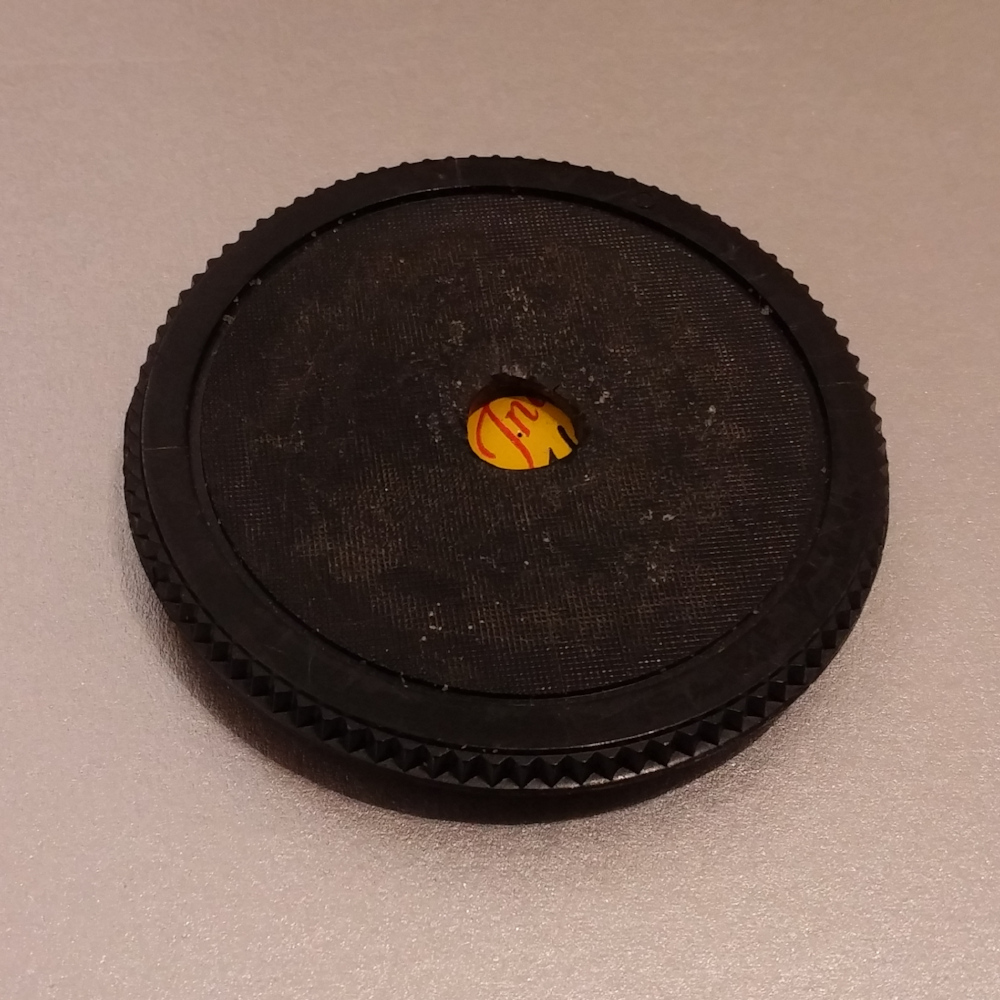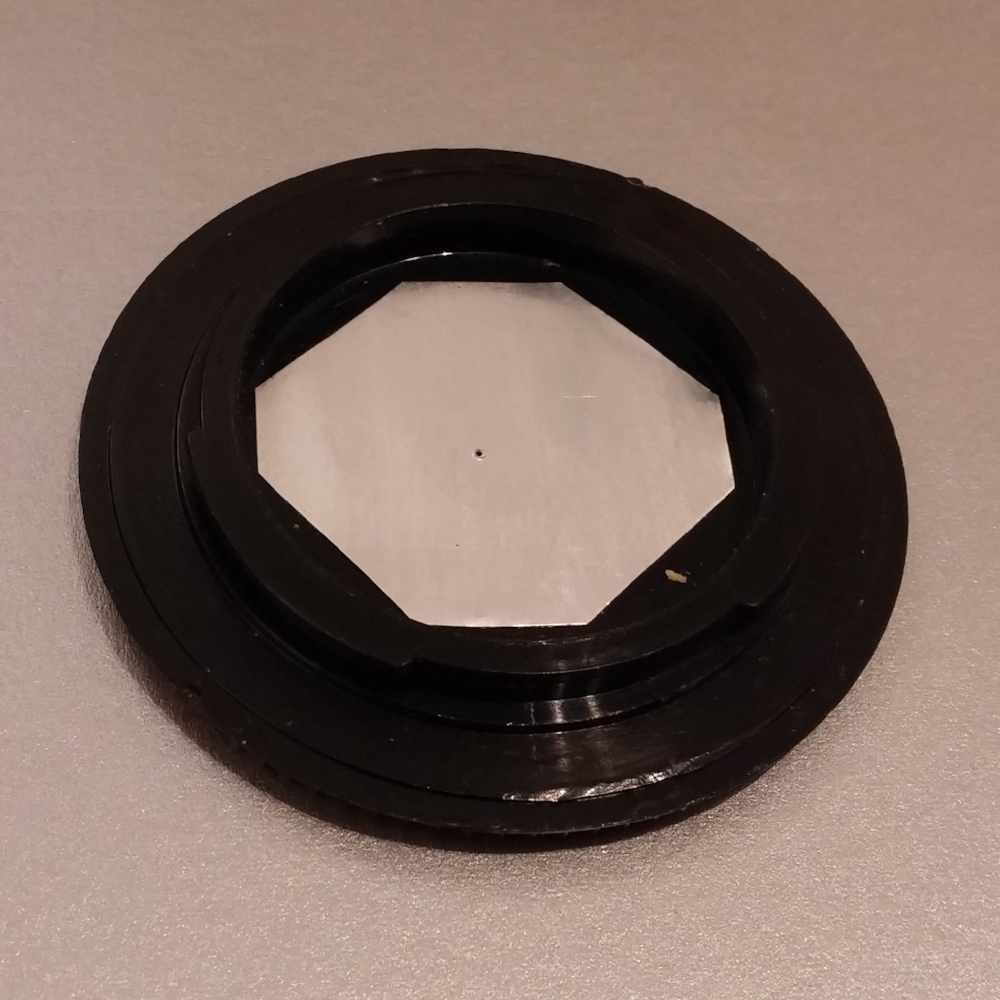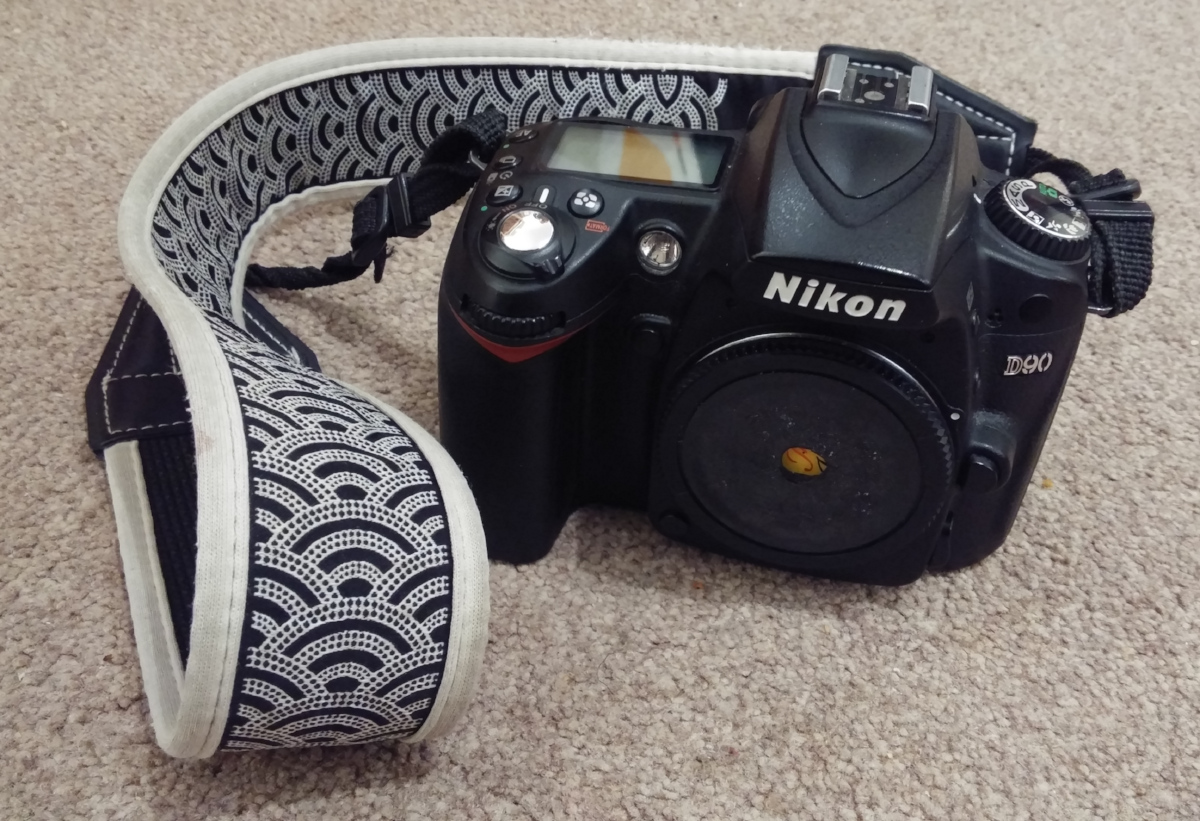Vega (α Lyrae)
Vega is an trivial adapter to turn a digital SLR into a pinhole camera.
- Motivation
- Design
- Gallery
Design
The construction of this pinhole camera is very straightforward, involving just two parts, an unused SLR body cap and an aluminum drinks can.
Taking the body cap, make a mark in the dead center of the disc. An easy way to do this is to put a ruler across its middle and mark a line. Then rotate the ruler 90 degrees and draw a second line. Where the two lines cross will be the center of the disc. Now take an electric drill and a moderately sized drill bit (any of No 6/8/10 will do) and make a hole straight through the center of the disc. It doesn’t have to be a neat job, but any jagged edges can be trimmed with a scalpel if desired.
Taking the aluminum drinks can, pierce the side with a pair of scissors and then proceed to cut out a small square or disc of metal, approximately 2cm in diameter. Take care when doing this not to cut yourself on the resulting sharp edges of the drinks can. The piece cut out will in all likelihood still have a small bend in it. Gently flex it in the opposite direction to remove the bend, leaving a flat piece of metal. It is now time to pierce the pinhole aperture in the metal. Using a small sewing needle and rotate it in the same way a drill bit would rotate until just the tip of it pokes through. Turn over the metal and use a piece of wet & dry sandpaper to smooth the pinhole and now pierce it again with the needle from this reverse side. A tip for making pinholes is to glue the sewing needle into a clothes peg to make it easier to handle.

A sewing needle glued into a cloths peg which is used to pierce pinholes. The wet & dry sand paper smooths out the ridges around the pierced hole
With the pinhole plate prepared all that remains is to glue it onto the body cap. Whether it is glued on the back or front of the body cap doesn’t affect the result – it just a matter of style / taste whether you want the metal plate visible or not. Superglue will do a fine job at holding the metal plate on the body cap and dries fast.

The front of the Nikon body cap showing the hole backed by a piece of aluminum drinks can containing the pinhole

The rear of the Nikon body cap showing the hole backed by a piece of aluminum drinks can containing the pinhole
The completed pinhole body cap can now be attached to the SLR camera in place of the lens. In order to take photographs the camera will need to be set to manual mode. There is no way to set the aperture of course, since that’s determined by the size of the pinhole, so the two ways to control exposure will be the ISO level and the shutter speed. Try 400 ISO and 1/2 sec as a starting point outside, take a shot and then review the histogram on the view finder to determine whether to increase or decrease exposure time.
